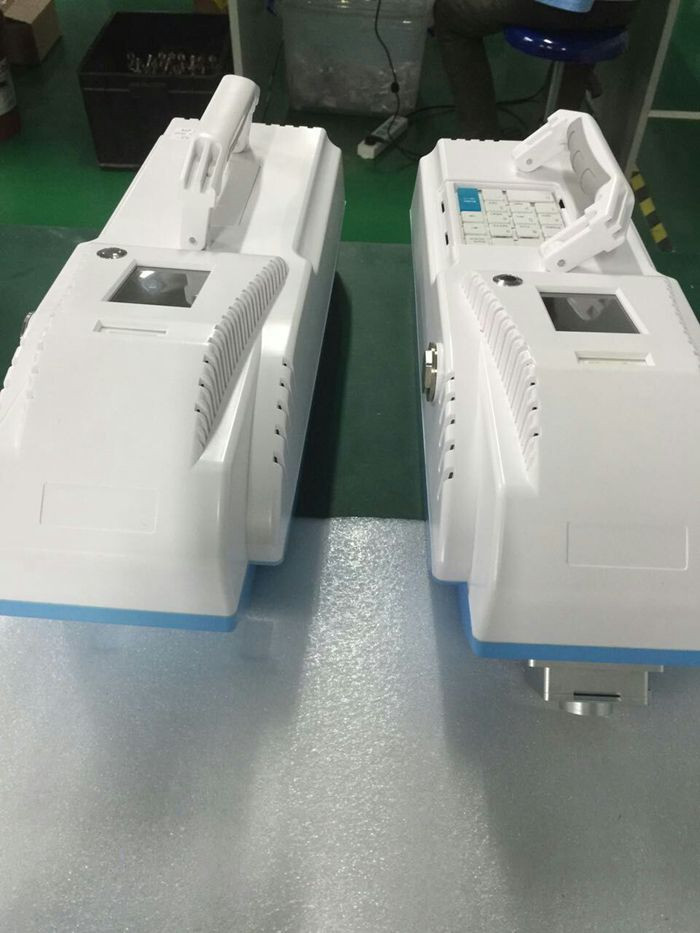Table of Contents
เครื่องตรวจจับโลหะแบบมือถือมักใช้ในสภาพแวดล้อมที่หลากหลาย ตั้งแต่จุดตรวจรักษาความปลอดภัยที่สนามบินไปจนถึงการขุดค้นทางโบราณคดี อุปกรณ์เหล่านี้ได้รับการออกแบบมาเพื่อตรวจจับวัตถุที่เป็นโลหะที่อาจซ่อนตัวบุคคลหรือฝังอยู่ใต้ดิน แต่คุณเคยสงสัยหรือไม่ว่าอุปกรณ์เหล่านี้ทำงานอย่างไรกันแน่? ในบทความนี้ เราจะมาสำรวจหลักการทำงานของเครื่องตรวจจับโลหะแบบมือถือ
หัวใจของเครื่องตรวจจับโลหะแบบมือถือทุกเครื่องคือขดลวดที่เชื่อมต่อกับแหล่งพลังงาน เมื่อเปิดเครื่องจะมีกระแสไฟฟ้าไหลผ่านขดลวดทำให้เกิดสนามแม่เหล็ก สนามแม่เหล็กนี้คือสิ่งที่ทำให้เครื่องตรวจจับโลหะตรวจจับวัตถุที่เป็นโลหะ
เมื่อวัตถุที่เป็นโลหะเข้ามาในบริเวณใกล้เคียงกับเครื่องตรวจจับ จะรบกวนสนามแม่เหล็กที่สร้างโดยขดลวด การหยุดชะงักนี้ทำให้เกิดการเปลี่ยนแปลงในสนามแม่เหล็กไฟฟ้ารอบขดลวดซึ่งอุปกรณ์ตรวจพบ จากนั้นเครื่องตรวจจับโลหะจะแจ้งเตือนผู้ใช้ว่ามีโลหะอยู่ด้วยการส่งเสียงหรือแสงแฟลช
ความไวของเครื่องตรวจจับโลหะแบบมือถือสามารถปรับได้เพื่อตรวจจับวัตถุโลหะที่มีขนาดและประเภทต่างๆ ซึ่งทำได้โดยการเปลี่ยนความถี่ของกระแสไฟฟ้าที่ไหลผ่านขดลวด ความถี่ที่สูงกว่าจะไวต่อวัตถุโลหะขนาดเล็กมากกว่า ในขณะที่ความถี่ที่ต่ำกว่าจะตรวจจับวัตถุขนาดใหญ่ได้ดีกว่า
นอกจากขดลวดแล้ว เครื่องตรวจจับโลหะแบบมือถือยังมีหน่วยควบคุมที่ประมวลผลสัญญาณจากขดลวดและพิจารณาว่าโลหะหรือไม่ มีอยู่ หน่วยควบคุมนี้มีหน้าที่ตีความการเปลี่ยนแปลงในสนามแม่เหล็กไฟฟ้าและกระตุ้นสัญญาณเตือน
[embedhttps://www.youtube.com/watch?v=FPBqhmi0-0E[/embed]เครื่องตรวจจับโลหะแบบมือถือบางรุ่นก็มี คุณลักษณะที่เรียกว่าการเลือกปฏิบัติซึ่งช่วยให้ผู้ใช้สามารถกรองโลหะบางประเภทได้ สิ่งนี้มีประโยชน์ในสถานการณ์ที่ผู้ใช้สนใจตรวจจับโลหะบางประเภทเท่านั้น เช่น อาวุธหรือเหรียญ
โดยรวมแล้ว เครื่องตรวจจับโลหะแบบมือถือเป็นอุปกรณ์ที่เรียบง่ายแต่มีประสิทธิภาพซึ่งอาศัยหลักการของแม่เหล็กไฟฟ้าในการตรวจจับวัตถุที่เป็นโลหะ ด้วยการสร้างสนามแม่เหล็กด้วยขดลวดและตรวจจับการหยุดชะงักในสนามนั้นที่เกิดจากวัตถุที่เป็นโลหะ อุปกรณ์เหล่านี้จึงสามารถแจ้งเตือนผู้ใช้เมื่อมีโลหะอยู่
โดยสรุป เครื่องตรวจจับโลหะแบบมือถือทำงานโดยการสร้างสนามแม่เหล็กที่มี ขดลวดและตรวจจับการหยุดชะงักของสนามที่เกิดจากวัตถุที่เป็นโลหะ จากนั้นหน่วยควบคุมจะประมวลผลสัญญาณเหล่านี้และแจ้งเตือนผู้ใช้ ด้วยความสามารถในการปรับความไวและแยกแยะระหว่างโลหะประเภทต่างๆ เครื่องตรวจจับโลหะแบบมือถือจึงเป็นเครื่องมืออเนกประสงค์ที่ใช้ในการใช้งานที่หลากหลาย

At the heart of every hand held metal detector is a coil of wire that is connected to a power source. When the power is turned on, an electric current flows through the coil, creating a magnetic field. This magnetic field is what allows the metal detector to detect metal objects.
When a metal object comes into the vicinity of the detector, it disrupts the magnetic field created by the coil. This disruption causes a change in the electromagnetic field around the coil, which is detected by the device. The metal detector then alerts the user to the presence of metal by emitting a sound or flashing a light.
The sensitivity of a hand held metal detector can be adjusted to detect different sizes and types of metal objects. This is done by changing the frequency of the electric current flowing through the coil. Higher frequencies are more sensitive to smaller metal objects, while lower frequencies are better at detecting larger objects.
In addition to the coil, hand held metal detectors also contain a control unit that processes the signals from the coil and determines whether or not metal is present. This control unit is responsible for interpreting the changes in the electromagnetic field and triggering the alert signal.
[embedhttps://www.youtube.com/watch?v=FPBqhmi0-0E[/embed]Some hand held metal detectors also have a feature called discrimination, which allows the user to filter out certain types of metal. This is useful in situations where the user is only interested in detecting specific types of metal, such as weapons or coins.
Overall, hand held metal detectors are simple yet effective devices that rely on the principles of electromagnetism to detect metal objects. By generating a magnetic field with a coil of wire and detecting disruptions in that field caused by metal objects, these devices are able to alert users to the presence of metal.
In conclusion, hand held metal detectors work by generating a magnetic field with a coil of wire and detecting disruptions in that field caused by metal objects. The control unit then processes these signals and triggers an alert to the user. With the ability to adjust sensitivity and discriminate between different types of metal, hand held metal detectors are versatile tools that are used in a wide range of applications.
